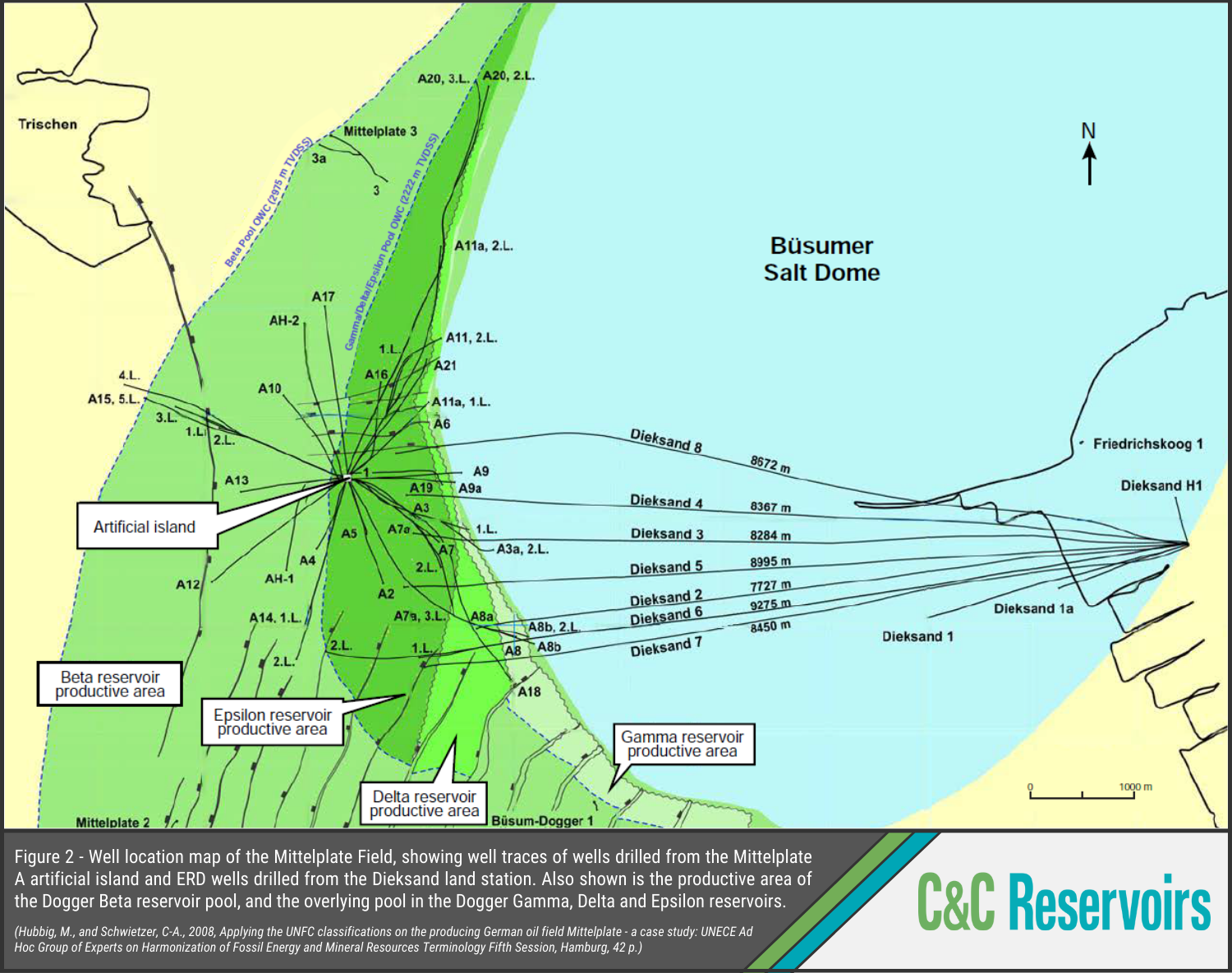The Mittelplate Field
Analogue Spotlight
Located within the UNESCO World Heritage Site of the Elbe Estuary, the Mittelplate oil field is Germany’s most productive field. However, the field’s location means it has to operate under some complex environmental conditions. With production commencing from the Dogger reservoir in 1987 by way of an artificial island, this field soon had to contend with some unforeseen problems.
It soon became apparent that weak natural drive, and the shape of the Beta pool (60km2, but just ~15m thick) would hamper production. This, combined with restrictions to surface disturbances, due to its location, meant that some creative solutions were required when the Gamma, Delta and Epsilon units came into production. Production levels in the Beta pool were boosted through use of water injection and ESPs, but it was the introduction of horizontal wells in 1994 that provided the most improvement, as these could effectively target the laterally extensive formation and lead to truly economic production.
The success of the horizontal wells continued as they were used to develop the Delta unit, driving production to over 9,600 BOPD (Fig. 1). Innovative techniques, such as extended-reach and dual-lateral wells, have played a key role in boosting output. When it came online, Dieksand 6 was the longest well in Germany, and utilized sidetracking and other development techniques leading to an impressive increase in STOIIP estimates of ~7 MMBO (Figs. 1 and 2). These cutting-edge approaches have been crucial to unlocking the full potential of this complex field, ensuring its continued success and growth.
Want to learn more? Read the full Mittelplate analogue in DAKS! Test your real-world problems against a global field and reservoir knowledge base, and discover best practices and lessons learnt from oil and gas analogues around the globe.


